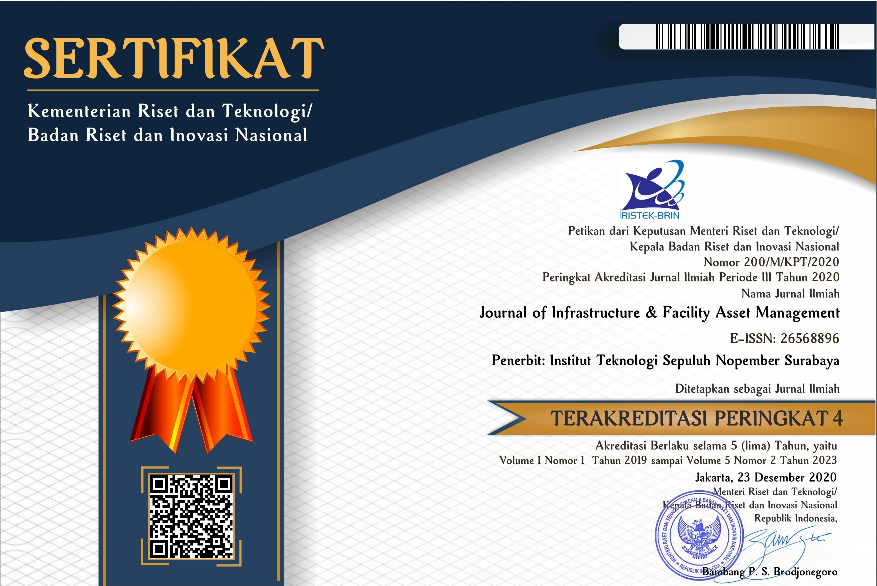The Socio-economic Transformations in the Peri-urban of Bandung Metropolitan Area
Abstract
Urban growth is referred to as the expansion of an urban area into the surrounding environment. The expansion gives rise to sub-urban development phenomena called peri-urbanization, which occurs in physical, economic, and social changes. This paper identifies the socio-economic transformations in the peri-urban Bandung Metropolitan Area, based on the theoretical determination of socio-economic variables and peri-urban typology. The study emphasizes the main feature of the socio-economic changes in each peri-urban typology based on the discriminant analysis. Socio-economic transformation is analyzed on the variables of population density, household economic sectors, people's education, and the number of prosperous families. A Peri-urban area is divided into three typologies: Predominantly Urban (dominantly urban characteristics), Semi-Urban, and Potential Urban Area (dominantly rural characteristics). The data and information required for the study are generated mainly from secondary sources. The study shows that socio-economic transformation occurs in each peri-urban typology at different levels of change. The different characteristics of peri-urban typology and its proximity to the city center result in a high socio-economic transformation rate.
Full Text:
PDFReferences
Antrop, M. (2000). “Changing patterns in the urbanized countryside of Western Europe”. Landscape Ecology, 15(3), p. 257-270.
Budiyantini, Y and V.Pratiwi. (2016). “Peri-urban typology of Bandung Metropolitan Area”. Procedia - Social and Behavioral Sciences, No.227, p. 833-837.
McGee, T.G. (1991). “The emergence of Desa Kota regions in Asia: expanding a hypothesis”. in: Ginsburg, N., Koppel, B., McGee, T.G. (Eds.), The Extended Metropolis: Settlement Transition in Asia. University of Hawaii Press, Honolulu, p. 3–25.
Pryor, R.J. (1968). “Defining the rural-urban fringe”. Social Forces. Volume 47, Issue 2, 202–215.
Ritohardoyo, S. (2013). Penggunaan dan Tata Guna Lahan. Penerbit Ombak. Yogyakarta.
Santoso, Singgih. (2002). Buku Latihan SPSS Multivariat. PT Elex Media Komputindo. Jakarta.
Suprayitno, H. & Soemitro, R.A.A (2018). ”Preliminary Reflexion on Basic Principle Infrastructure Asset Management”. Jurnal Manajemen Aset Infrastructur & Facilitas – JMAIF 2(1) Maret 2018.
Webster, D. (2002). On the Edge: Shaping the Future of Peri-urban East Asia. Stanford University, Stanford.
Yunus, H.S. (2008). Dinamika Peri Urban: Determinasi Masa Depan Kota. Pustaka Pelajar. Yogyakarta.
Yunus, H.S. (2000). Struktur Tata Ruang Kota. Fakultas Geografi, Universitas Gadjah Mada.Yogyakarta.
Yunus, H.S. (2006). Megapolitan: Konsep, Problema, dan Prospek. Pustaka Pelajar. Yogyakarta.
DOI: http://dx.doi.org/10.12962%2Fjifam.v4i1.14299
Refbacks
- There are currently no refbacks.
Visitor :
Flag Counter

Journal Of Infrastructure & Facility Asset Management by Institut Teknologi Sepuluh Nopember is licensed under a Creative Commons Attribution-ShareAlike 4.0 International License.





